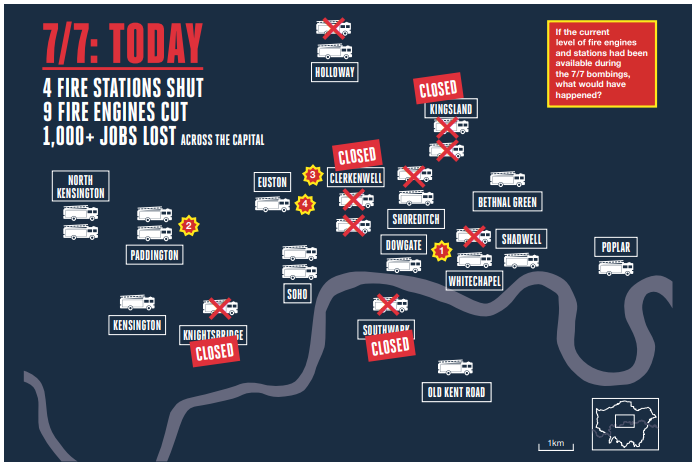This year I was lucky enough to gain some fascinating insights into trades unions as one of the judges on the 41st Trade Union Congress’ Communication Awards. The awards aim to help spread best practice amongst trade unions and reward people’s hard work through a fun and informal awards ceremony.
This year’s judges consisted of myself from Outlandish, Iona Lawrence of the Jo Cox Foundation, Andrew Linnington from Nautilus, Angela Monaghan from The Guardian and Karen Buck MP.
Our overall feeling was there was some great activity as well as some excellent “improvement opportunities”. In general we felt the movement would benefit from more collaboration and communication about best practices across trade unions.
What we liked
Friendly organisations – many of the unions came across as really nice organisations to be a part of. Things that worked especially well included stories from (and images of) new members’ experiences; members smiling and supporting one another; humour; easy ways of getting involved – notable the professional associations were generally better at this that the more traditional (and often larger) trade unions. I’d recommend checking out NEU’s “New to Teaching” for an example of how to put forward a friendly impression.

A good mixture of content – most unions did a great job of covering the huge breadth of their work – protecting workers, protecting the public (in the case of pilots, firefighters, teachers, etc.) and campaigning for better training/standards.

Great design on flagship content – almost all unions produced very professional looking magazines for members and for major campaigns. Although this design didn’t always make it into all materials, it was good to see that our movement can create designs every bit as slick and engaging as our private sector counterparts.
Great value – many of the projects submitted were done on shoestring budgets and produced velvet-rope outcomes. It’s great to see organisations using innovative ways to save money, although there were times when the judges felt that it would be worth investing more to fix final problems or get greater exposure for campaigns.
Great content – some of the content was absolutely first rate. For me, the Royal College of Midwives’ videos about female genital mutilation stood out as some of the most powerful video content I’ve ever seen – the third video made me burst into tears. But it was not only the clearly emotional content that won praise – Strike! (the story of a first time striker in BALPA’s publication), a story about a pensioner helping put out a fire because the new cut-price fire engines’ hoses are too short, the “Success Stories” strand in Equity’s magazine and many other stories were really great ways to make the union movement more relevant to readers than ever before.
Room for improvement
Lesson 1: Diversity
While there were many great examples of representation of diversity in magazines and other materials (Equity’s magazine won largely on the basis that it was particularly strong here) there were some examples that fell short of the standards we expect in 2018, particularly with regards to ethnicity.

The judges felt that is an essential priority for unions to portray the organisations they want to have in order to reverse rather than perpetuate any lack of diversity in the movement. We noted that this is a ‘hygiene factor’ in the awards, and that it would be very difficult for an entry to win if it did poorly in terms of diversity.
Lesson 2: We need greater digital ambition
The judges noted that there were relatively few ambitious digital projects, and that unions risk falling further behind business, charities, the government and other consumer/political groups that have more far-ranging digital ambitions. There were some great efforts – WhatsAppening from the CWU, Public Sector Pay Pinch from GMB, a ‘branch website in a box’ from Unison – these were all quite low-budget, tactical initiatives. While these initiatives are essential – and show the creative potential of the people trying to solve problems on the ground – we need more high-level commitment if we’re to continue to keep businesses and the government in check while attracting more young members.

Lesson 3: We need more co-ordination, collaboration and sharing in the sector
Every single union had something valuable to offer that they did better than the rest – a particular strand of articles, a bargain commission or campaign, a knack with headline writing, etc. and every union had something to learn. While unions obviously compete with one another in some ways, our movement will succeed or fail collectively – we’re stronger together and weaker apart.

Next steps
In order to address these issues – at least in so far digital is concerned – I’m proposing the creation of the digital ‘community of practice’ for trade unions which, one day, I hope, will become the basis of a ‘Trades Union Digital Service’ that will co-ordinate, streamline and amplify the efforts of all trade unions in the UK. It’s a big job and many have tried and failed before but, I believe, that it’s the most pressing issue facing the workers’ movement today. If you work for a union and have some sort of digital skills or expertise – or if you need those expertise and don’t know where to find them – please email harry@outlandish.com or call me on 07738536552 and I’ll add you to the group/meetup/lists as they evolve.
Also, don’t forget to check out all the entries to this years’ competition and what the judges said about each – they’re listed in the TUC award brochure and many of the entries can be found via your favourite search engine.






